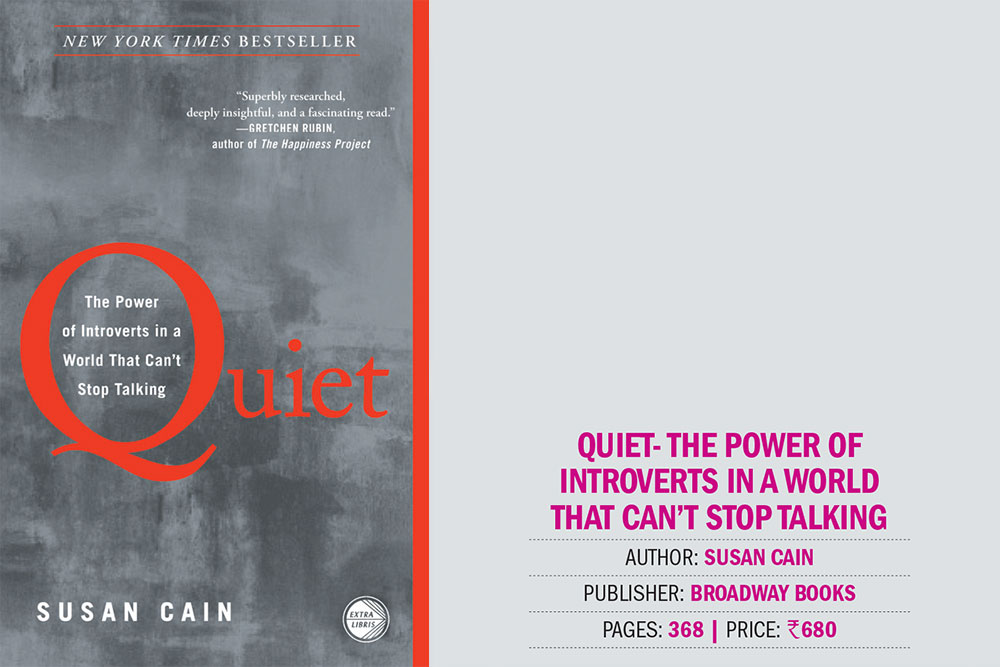Quiet is at once a provocative and a very entertaining read. In this bestselling book, Susan Cain argues that in the context of the Western ‘idealised stereotype’ of the extrovert, the go-getter, the alpha male— introverts are undervalued, leading to what she terms a ‘colossal waste of talent, energy and happiness. While her premise is based on Western society, one can see equal applicability to the Indian context. The ‘good student’ sits in front of the class and raises his hand to every question, whereas in recruitment processes, group discussions mean the loudest are the ones who often get noticed most, and at our workplaces, where the perceived merit of an idea is often based on how loudly and visibly it is advocated. Cain argues that introverts have equal, if not more, value to bring when it comes to original ideas, because sometimes truly original ideas come from introspection, not the ‘groupthink’ that happens in a group situation with voluble and visible members pushing in a certain direction.
Using research from biology, neuroscience and psychology, Cain not just establishes how introverts are wired differently in terms of temperament, but also offers practical suggestions on how to harness their talents and points of view. She then offers advice to introverts on how they can contribute in a world that is dominated by extroverts. Her own diverse background- as a lawyer and a negotiator, ensures that she is able to distil these into actionable, very readable insights instead of being pedantic, and that is perhaps the biggest strength of the book. It makes you think, it makes you question things we often take for granted, but does so while staying highly engaging and without becoming preachy.
In an increasingly connected and globalised workforce, the one additional benefit many readers in the corporate sector will derive is a better understanding of how to get the best out of partners or team members. Part of the big message of this book is that when we work with people from diverse cultural, socio-economic or ethnic backgrounds, we should not just gravitate towards those who are outwardly similar to us in style or to what we take to be the ‘norm’ since that is usually our comfort zone, but to be sensitive to those who are different from us, and try and get the value from them that we would not get unless we engaged with them differently.
Clearly, the message of Quiet has a lot of broader applicability than the workplace, and Cain demonstrates how a better understanding of different temperaments can help us unlock greater value in our personal relationships; in how we engage with children in schools to get the best out of students. Cain does also draw the parallel to women’s role in society- saying that introverts today are like where women were in the 1950s and 1960s- a segment whose value to the workforce and world outside their home was discounted, but which was on the verge of coming into its own.
Looking at modern Indian society, the broad message of Quiet has a special resonance. In the age of strong and rigid points of view, immediate social media amplification and 24x7 news channels on the lookout for the latest sensation, we run the real risk of noise substituting for news, of antagonism substituting for meaningful discourse and of the loud minority driving the agenda on issues of real import to our nation at the cost of the silent minority. The basic idea of listening, of valuing the opinions of those who do not shout it from the rooftops and of building in a broader appreciation for diverse styles, temperaments and points of view is something we could do with- and that realization is perhaps the biggest added value of Quiet for the contemporary Indian reader.











